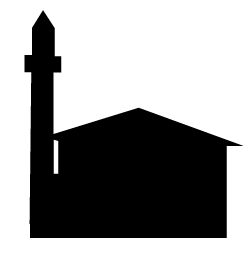Zundaga
Zundaga Mosque
In most cases, when decades of neglect or Soviet repurposing have caused extensive damage to historic interiors, villagers can generally only manage to repair what is left and paint over the rest. At Zundaga, however, locals are currently in the process of a painstaking redecoration with applied wooden carvings. Part of the cellar has even been converted into a woodworking shop to support this process (during the Soviet period, this area served as the village barbershop). The new prayer hall decoration is nearly complete, with motifs drawn from common historical templates already applied to the mihrab, minbar, mezzanine railings, and framing around the dome. For now, the interior remains unpainted. Older columns carved with geometric designs (and with remnants of red and blue pigment) on the verandah and in the cellar suggest that the original decorations likely resembled those at other Ottoman-period mosques in the region like Akho, Kvirike, and Pirveli Maisi. A stone plaque embedded in the foundation near the entrance contains the hijri date 1321 (1903), plausibly the date of Zundaga mosque’s last major renovation before the Soviet period. If so, this renovation would have introduced the sort of applied wooden ornament currently being replicated for the new interior. The mosque’s walled courtyard complex also includes a cemetery (with several nineteenth century gravestone markers) and a stone trough, perhaps the remains of an ablution fountain.
DISTRICT : Keda
LOCATION : 41°34’43.8”N 41°49’32.5”E
POPULATION : 299
CONSTRUCTION DATE : 1860s
RENOVATION DATE(S) : 2015-present
CRAFTSMEN : Usta Kabaz Ahmed (Laz) with locals Kajaia, Gogitidze, and Turmanidze
MINARET : No

